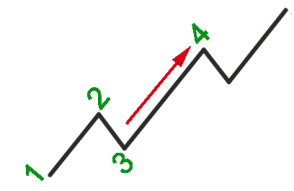Scalping on the move.
As has been noted more than once, the main problem when scalping is entering the market; it is quite difficult for a trader to understand on what basis to make a decision to open a transaction.
what basis to make a decision to open a transaction.
Some rely on intuition, others use indicators for scalping , but trading on intuition almost always ends in failure, and indicators often give false signals.
You can learn how to scalp if you understand the main principle of opening trades when scalping and learn how to apply it.
The simplest entry option for scalping is to catch pullbacks and enter after the start of a trend movement; the method can only be used if there is a stable trend without sudden price movements.
Such moments most often occur during a flat, or in the intervals between important news.
After that, all you have to do is determine the trend and watch the price, for example, if there is an uptrend , we wait for prices to start falling, and when the rise resumes, we open a buy deal.
At the same time, this needs to be done as quickly as possible, so it is advisable to prepare an order in advance so that you can only click buy. The trade is held until the next fall begins and is closed using One-Click Trading .
We're catching the wave.
The second entry option is more risky, but sometimes allows you to get several dozen profits from one transaction.
You have often noticed that after the price sharply goes a long distance, it follows a rollback of at least 30% of the previous movement.
This is the movement you need to catch, but you shouldn’t get too carried away; as soon as the price passes 20 percent, you can close the deal.
If upon entry the price goes against you, the transaction is closed with a loss of no more than 10 points. The only drawback is that you need to constantly monitor the terminal, so it is advisable to combine this technique with another entry strategy so as not to waste time.
